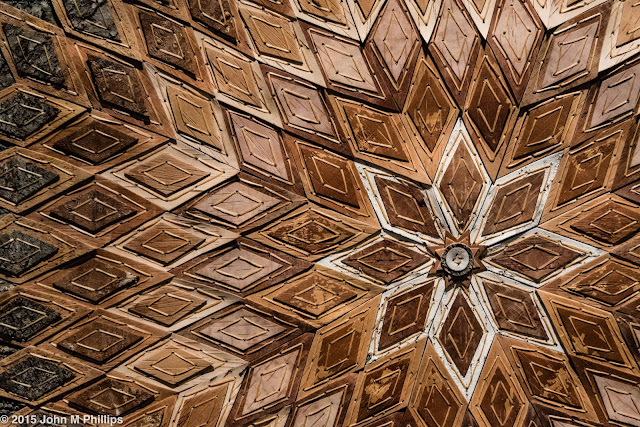There were an advertised 200 plus classic autos at the show, ranging from early 1920s roadsters to 1980s muscle cars. It helped that it was a sunny day, making for a lot of reflections off the cars' highly polished sheet metal.
Early on was one of the classics of the classics, a 1957 Chevy. As usual, I found myself focusing on details rather than trying to shoot the entire vehicle. And when I do focus on details, my goal is to capture the car's signature aspect. In the case of the 1957 Chevy, that is the chrome-filled rear fin.
And here is a hood ornament for what I think was a Ford.
Headlights can be another distinguishing feature, as in the following shots.
As some of the prior shots illustrate, grilles can also act as a point of interest, including the following.
Here is one of the few full-car photos that I took.
The clouds actually helped this shot, I think, creating some drama. Below is a detail shot of this beauty.
Rear trunk lines can also provide some interesting compositions, as in the following.
As can reflections.
One of the cars, an impeccably polished black 1940s Olds (I think), was positioned next to a bright yellow coupe, which allowed me to capture reflections of the coupe in the fender and side panels of the Olds.
The owner of the Olds joked that I should be charged $3 per shot for the reflections.
although highly polished surfaces can present opportunities for interesting shots, I was particularly drawn to a couple of beautifully restored matte-finished autos.
I was especially taken with this last car. Although I converted this to black & white, the car was silver colored and the black & white didn't change much other than to eliminate a little pin striping.
Toward the end of my visit, I caught this shot of one of the owners doing some last minute polishing on his white 1956 Ford Thunderbird.
I did take a couple of shots of his car, including one of the spare tire container on the rear bumper.
When I took this shot the owner remarked that his car had photographed a number of times, but never a shot of just the spare tire. We laughed about that.
John


























































